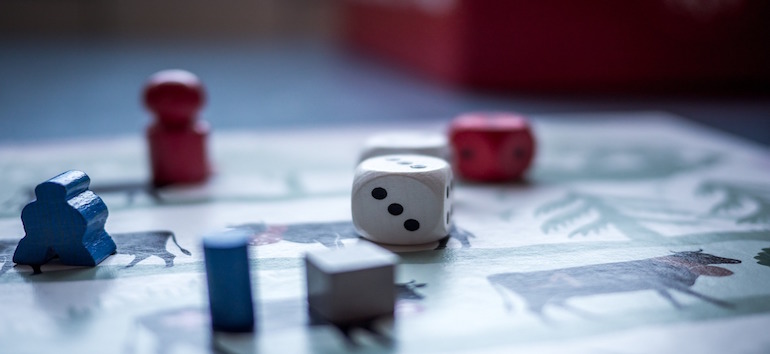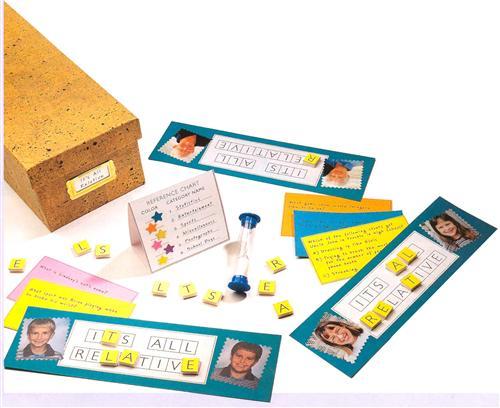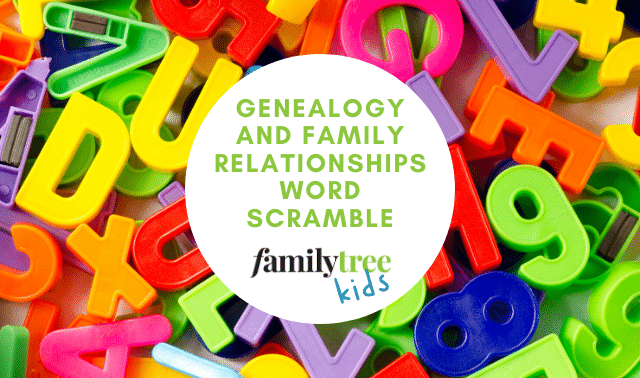Sign up for the Family Tree Newsletter! Plus, you’ll receive our 10 Essential Genealogy Research Forms PDF as a special thank you.
Get Your Free Genealogy Forms
"*" indicates required fields

Can you list your great-uncle’s three favorite hobbies? Was your great-grandmother’s middle name Amelia, Ophelia or Adelia? Is it true your father played poker while your mother gave birth to you? Why did your brother skip first grade?
You can not only track down the answers to such questions but also preserve and share them — by transforming your family’s trivia and history into a fun-filled, personalized game.
Several years ago, the boom in trivia games inspired my sister and me to create just such a Christmas gift for our parents. Our game, which we called “It’s All Relative,” combined our family’s history with contemporary events. At first, it included just a few dozen questions and answers. Today, this living family legacy contains more than 1,000 historical (and, in some cases, hysterical) questions. Each Christmas our parents, spouses and children add new questions and answers to this keepsake; then three generations play the game, sharing memories and laughter.
You can create the same kind of gift and tradition for your family. Here’s how, step-by-step.
Step 1: Start with What You Know
Getting started is as simple as taking pen and paper in hand and brainstorming what you know about yourself and your place in your family’s history. This is your first draft, so don’t worry about wording or legibility; just get your thoughts down. Think simple and obvious: When and where were you born? How did your parents meet? What was your first job?
As you jot things down, one memory will jog another. Before you know it, you’ll have a lengthy list of personal questions and answers.
Once you’ve randomly plumbed your memory, try thinking chronologically. For example, reel back to your first memory, or ponder personal milestones (first bike ride, first tooth, first communion). Then, for fast “research,” refer to a historical timeline and connect family events and personal observations to historical events: When did Grandpa Smith serve in World War II? Where was Nana when she heard about President Kennedy’s assassination?
Even the fads and fashions of your childhood can elicit funny, illuminating questions. When you’ve brainstormed all you can about your immediate family, concentrate on one family member at a time. Naturally you’ll know fewer facts about, say, your great-grandfather (unless he’s alive or you’re lucky enough to have some in-depth account about him), but don’t let that stop you. Every little event, every fact, has the potential to be preserved as a game card.
Step 2: Collaborate with Family Members
While you can create a family history trivia game alone, you’ll have a lot more fun—and generate a lot more questions—if you collaborate with relatives. You can divvy up the research tasks, such as interviewing designated relatives and contacting old family friends. Or you can meet for a brainstorming session. (Bring a tape recorder. Writing down questions as you share memories may inhibit your creative flow and conversation; this way you can transcribe the tape later.)

You can interview family members by phone or email, or you can solicit information by mail. Make sure to include a deadline and be specific about the information you want and the reason you need it. (For mail inquiries, include a self-addressed stamped envelope.)
If the game is to be a surprise gift for an anniversary or birthday, you may need to surreptitiously track down some information from the gift recipient. “Remember when…” is a great conversation starter, one that will arouse little suspicion and generate lots of useful trivia.
Step 3: Browse Through Family Documents and Memorabilia
If you’ve already done substantial genealogical research, you have an untapped gold mine of family trivia at your fingertips. A simple family tree “pedigree” chart can yield many questions: How many years separated Gran’s and Gramp’s deaths? How old was Ella when she married? What about when she died? Where was Cousin Susie born? Family group sheets, which focus on one nuclear family, can provide even more fodder.
But it’s the personal paper trail that will reveal the most unexpected, rich details of your loved ones’ lives. Sift through school papers, scrapbooks, letters and diaries (with permission, of course). Study address books, deeds, contracts, military records and newspaper clippings. You’ll be inundated with personal trivia: When was Cousin Frankie discharged from the army? Why was Aunt Sue featured in The New York Times? Who stayed back in third grade? Remember, any document, any tidbit, has the potential to be preserved as a game question.
Photographs can provide both unexpected visual information and laughs. Slip each picture (or photocopy) into an envelope, assign a code number to each envelope and corresponding question card, then use the five Ws to create related questions: Who appears in this picture? What has Aunt Jane got on her head? When and where was this picture shot? Why is Uncle Bill scowling?
Step 4: Create Question and Answer Cards
Index cards make great question and answer cards. If you opt to divide your questions into categories, use multi-colored cards and key each category to a color (for example, Statistics = Blue, Entertainment = Orange, Sports = Green, School Days = Yellow). For consistency, write each question on the lined side of the card and each answer upside-down on the unlined back. For legibility and longevity, invest in acid-free fine-point pens or markers.
You can write questions requiring short or fill-in answers, but if you include multiple-choice and true/false questions, your game will engage everyone—including children and new family members. They might not have a clue about the correct responses, but this way they can at least guess.
Step 5: Finalize Your Rules and Play the Game!
For our family’s game, my sister and I included categories, made personalized playing pieces and wrote intricate rules. You can be equally detailed, or you can just use question cards for quick quizzing fun.
From the June 2000 issue of Family Tree Magazine. Last updated October 2024.








